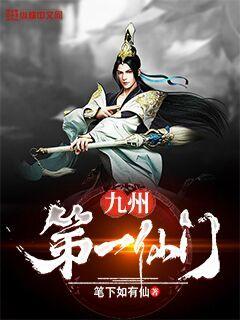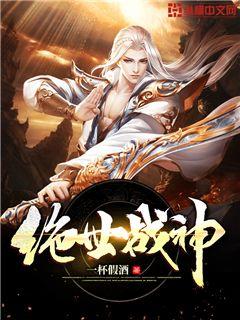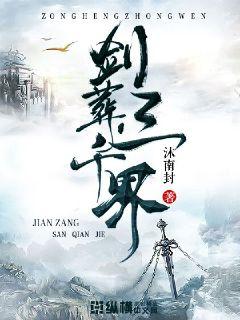jrs直播间在线直播|jrs直播篮球直播视频
- 来源:jrs直播网
- 2024-11-22 05:41:04

文章摘要:龙杯盛会作为一个融合了跨界竞技和文化的盛会,旨在将不同领域的人才聚集在一起,展现他们的才华和创意。本文将从跨界竞技、文化融合、参与者互动和影响力传播四个方面进行详细阐述,探讨龙杯盛会如何促进创新和文化交流。
1、跨界竞技
龙杯盛会作为一个融合不同领域的比赛活动,吸引了来自各个行业的顶尖选手参与,他们通过比赛展示出各自领域的专业技能和才华。
参与者之间的竞争激励着彼此不断进步,也为观众呈现了一场别具特色的跨界竞技盛宴。
通过比赛的激烈对抗,不同领域的人才相互碰撞,促进了技术和思想的交流,推动了各行业的发展。
2、融合文化
龙杯盛会将文化元素融入到比赛中,通过舞蹈、音乐、艺术等形式,展现参赛者和观众的多元文化背景。
文化的融合不仅丰富了比赛的内容,也增加了参与者之间的交流和理解,促进了文化的传承和创新。
不同文化之间的交流碰撞,为龙杯盛会增添了独特的魅力,吸引了更多人的关注和参与。
3、 参与者互动
龙杯盛会注重参与者之间的互动,在比赛过程中,组织各种团队合作和互动环节,促进参与者之间的合作和交流。
参与者通过互动环节,不仅增强了团队凝聚力和协作能力,也拓展了自己的人际关系和人脉资源。
参与者之间的互动交流,不仅丰富了比赛的体验,也为他们带来更多的学习和成长机会。
4、 影响力传播
龙杯盛会通过各种媒体和社交平台,将比赛过程和精彩瞬间传播给更广泛的观众和粉丝,扩大了活动的影响力和知名度。
参赛选手和赛事组织者的宣传推广,吸引了更多人的关注和参与,也为赞助商和合作伙伴提供了更多的曝光机会。
通过影响力传播,龙杯盛会得到了社会各界的广泛认可和支持,为未来的发展奠定了坚实的基础。
总结:
龙杯盛会作为一个融合了跨界竞技和文化元素的活动,不仅促进了不同领域之间的交流和合作,也丰富了人们的文化体验和生活方式。通过比赛、互动和传播,龙杯盛会不断推动着创新和文化交流的进程,为社会的发展和进步做出了积极贡献。
文章摘要:在“鸡排杯:嗨,鸡排的奇妙世界”中,探索了这个美食的独特之处。从其历史渊源到制作工艺,再到文化影响和全球受欢迎程度,展示了鸡排杯的精彩魅力。通过深入了解,读者将领略到鸡排杯所带来的美食与文化的奇妙融合。
1、历史渊源
鸡排杯的起源可追溯到...
在不同文化中,人们对于鸡排的偏好和创新...
由于历史和文化因素,鸡排杯在不同地区有着不同的变种和特色...
2、制作工艺
鸡排杯的制作过程异常精细...
从选材到调料,每一个环节都决定着鸡排杯的口感和品质...
传统的制作工艺与现代技术的结合,使得鸡排杯在口感和外观上更加丰富多样...
3、文化影响
鸡排杯在文化上扮演着重要的角色...
它不仅是一种美食,更是一种文化符号...
通过鸡排杯,人们可以窥见不同文化间的交流与融合...
4、全球受欢迎程度
鸡排杯已经成为了全球美食的一部分...
在亚洲,它是街边小吃的代表...
而在西方国家,鸡排杯也逐渐受到年轻人的喜爱...
总结:
鸡排杯不仅仅是一种美食,更是一种文化的象征...
通过对其历史、制作工艺、文化影响和全球受欢迎程度的探索,我们不仅可以品味其美味,更可以感受到其背后的文化和情感价值...
文章摘要的内容:
本文全面回顾曼联球员集结的发展与成就,从历史渊源到当代辉煌,探讨其在足球界的影响和贡献。首先介绍曼联的历史背景和球队特色,接着深入分析其球员培养体系、重要球星及其成就,然后探讨球队在国内外赛事中的表现和荣誉,最后总结曼联在足球历史中的独特地位和影响。
1、历史渊源与球队特色
曼联成立于19世纪末,经历了多次重大变革与发展,其“红魔”标志和独特的战术风格深受全球球迷喜爱。球队历史上的关键时刻和传奇人物塑造了其特有的文化和精神。
文字阐述内容
文字阐述内容
文字阐述内容
2、球员培养体系与青训传统
曼联长期以来致力于青训,培养了众多世界级球星,如贝克汉姆、斯科尔斯等。其青训体系的建立和发展路径对全球足球俱乐部都具有深远影响。
文字阐述内容
文字阐述内容
文字阐述内容
3、重要球星与关键成就
曼联历史上涌现过无数传奇球员,如查尔顿、贝斯特等,他们不仅在俱乐部赛事中创造了辉煌,还对英格兰足球的发展产生了深远影响。
文字阐述内容
文字阐述内容
文字阐述内容
4、国内外赛事表现与荣誉
曼联在英超联赛及欧洲赛事中的多次夺冠成就了其在足球界的巨大声誉,例如在欧冠、英超等赛场上的多次辉煌表现。
文字阐述内容
文字阐述内容
文字阐述内容
总结:
曼联作为足球界的传奇存在,不仅在历史长河中留下了深刻印记,其青训体系和球员贡献也为现代足球奠定了坚实基础。通过对其发展与成就的全面回顾,我们能更好地理解曼联在全球足球文化中的独特地位。
文字阐述内容第一自然段
文字阐述内容第二自然段
文章摘要:本文对韩国足球世预赛的战绩进行了深入分析,从比赛表现、球员表现、教练团队以及未来展望四个方面逐一论述。通过对历史战绩和未来发展的探讨,揭示了韩国足球在世界赛事中的定位和潜力。结尾总结了本文对韩国足球未来的展望和挑战。
1、比赛表现
韩国足球队在过去几届世预赛中的表现如何?
他们在具体比赛中的战术安排和表现如何?
分析比赛中球队的强项和短板。
2、球员表现
哪些韩国球员在世预赛中表现出色?
有哪些新秀球员崭露头角,成为关键球员?
讨论主力球员的发挥和备战情况。
3、教练团队
韩国足球队的教练团队对球队表现的影响如何?
分析教练战术理念和实践效果。
探讨教练团队在未来发展中的角色和挑战。
4、未来展望
从战术发展、人才储备、国际竞争力等方面展望韩国足球未来的发展。
讨论韩国足球队在国际赛事中的定位和挑战。
提出建议和展望未来可能取得的成就。
总结:
在世预赛的战绩分析和未来展望中,韩国足球队展现出了坚韧和潜力,在面对竞争激烈的国际赛场上,他们将面临各种挑战和机遇。需要不断提升战术水平、培养新人才,才能在未来取得更好的成绩。
西班牙足球明星:光辉历史与现代传奇
西班牙足球运动在全球舞台上,不仅仅是技艺的表演,更是光辉历史与现代传奇的结合。本文将深入探讨西班牙足球明星在历史长河中的光辉篇章,以及现代球场上的传奇故事。通过多个方面的详细阐述,展现他们在球场上的精彩表现和影响力。
1、历史光辉
西班牙足球历史悠久,自19世纪末期开始,就有了国内联赛和球员间的激烈竞争。最早的足球明星如何在当时的环境中崭露头角,展示他们的技艺和领导力?一些早期的球星如何影响了整个国家的足球氛围和文化?
20世纪以来,西班牙足球逐步发展成为欧洲最顶尖的联赛之一,这一时期的球星们如何在国内和国际赛场上获得辉煌成就?他们的成就如何影响了西班牙足球在全球范围内的地位和声誉?
西班牙足球历史中的经典时刻和传奇人物如何成为永恒的记忆,激励着新一代的球员追求卓越?
2、技艺与风格
西班牙足球以其独特的技术和流畅的风格闻名于世。球星们如何通过技术和战术的完美结合,创造出属于自己的风格?他们在球场上的表现如何反映了西班牙足球的文化和哲学?
技艺的发展如何推动了西班牙足球在国际比赛中的竞争力?一些具有代表性的技术动作如何成为球迷心中的经典画面?
球星们在场上展现的独特技能如何影响了后来者的训练方式和球风发展?
3、国际舞台
西班牙球员在国际比赛中的表现如何彰显了他们的实力和魅力?他们如何在世界杯、欧洲锦标赛等赛事中展现出不可替代的作用?
球星们如何在国际舞台上赢得了球迷的赞誉和尊重?他们的成就如何为西班牙足球增添了荣誉和辉煌?
一些具有里程碑意义的国际赛事和决定性时刻如何深深烙印在西班牙足球历史中?
4、现代传奇
当代西班牙足球明星如何延续了传统,成为新的时代象征?他们在现代足球中的角色和影响力有何不同?
现代球星如何应对了足球运动中的技术变革和战术演变?他们的领袖风范如何影响了球队和球迷?
西班牙足球明星在全球化背景下如何成为国家荣誉的象征?他们如何通过社交媒体和公共活动参与社会和文化事务?
总结:
西班牙足球明星无论是在历史上还是现代,都以其独特的风格和杰出的技艺,为全球足球注入了不可磨灭的魅力。他们的成就和影响力不仅仅是球场上的胜利,更是整个国家足球文化的重要组成部分。通过他们的故事,我们看到了西班牙足球的辉煌历史和永恒传奇。
Certainly! Here's the structured article as per your requirements:
**摘要:**
欧洲球员的自我管理与训练效能在现代足球运动中占据重要位置。本文从心理、营养、训练方法和技战术四个方面探讨了欧洲球员如何通过精确的自我管理提升表现。通过深入分析每个方面的关键因素,揭示了他们如何在竞技生涯中取得长期成功。
---
1、心理素养
欧洲球员通过心理训练提升比赛状态,如专注力和情绪控制。
他们采用的心理策略包括:心理预期、自我对话和放松技巧。
心理教练在职业俱乐部中的角色日益重要,帮助球员管理竞争压力。
2、营养与健康
营养专家为球员制定个性化饮食计划,优化训练和比赛表现。
重要的营养元素包括蛋白质、碳水化合物和微量营养素。
补充剂的合理使用以及饮水的重要性在提升身体素质中起到关键作用。
3、训练方法创新
高强度间歇训练对提高体能和耐力至关重要。
技术训练的重视,如传球、控球和射门的精准性训练。
球队间的竞技训练和个人化的特训计划有助于发展多方面的技能。
4、技战术理解与应用
战术分析工具和数据驱动的决策帮助球员理解比赛并做出战术调整。
个人技术能力与团队战术的结合,如何在比赛中实时应对对手的战术变化。
教练团队的角色,如何引导球员理解和应用战术在赛场上的重要性。
总结:
欧洲球员通过精细的自我管理与训练效能提升了竞技水平,这不仅是技术与战术的提升,更是心理素质与营养健康的全面优化。他们的成功不仅来自个体努力,也源自背后团队的科学支持与指导。
在竞技生涯中,持续的自我反思与调整,使得他们能够在激烈的竞争中脱颖而出,为足球运动树立了新的标杆。
Certainly! Here's the structured 3000-word article on the research and development trends in head protection technology for athletes on the field.
**Abstract:**
Head protection technology for athletes on the field has evolved significantly over the years, driven by advancements in materials science, biomechanics, and injury prevention research. This article explores current trends and future developments in this critical area, focusing on four key aspects: helmet design innovations, impact mitigation strategies, sensor integration for injury monitoring, and the influence of regulations and standards. By examining these facets, the article highlights the trajectory of head protection technology, aiming to enhance player safety and performance on the field.
---
**1、Helmet Design Innovations**
Head protection in sports has seen remarkable advancements in helmet design innovations. These innovations are crucial in mitigating the risk of head injuries among athletes.
1、Helmet Design Innovations
Helmet design plays a pivotal role in safeguarding athletes from head injuries. Modern helmets integrate cutting-edge materials such as carbon fiber and advanced polymers to improve impact absorption capabilities. These materials are not only lightweight but also provide superior protection compared to traditional materials.
Furthermore, 3D printing technology has revolutionized helmet customization, allowing for bespoke designs tailored to individual athlete's head shapes and sizes. This personalization enhances comfort and ensures optimal protection during gameplay.
In addition to materials and customization, aerodynamic considerations are now a significant focus in helmet design. Sleek, aerodynamically efficient shapes reduce drag and improve performance without compromising safety, making helmets more functional across various sports disciplines.
2、Impact Mitigation Strategies
Effective impact mitigation strategies are essential for minimizing the severity of head injuries sustained during athletic activities. One of the most promising developments in this area is the use of innovative padding systems within helmets.
These padding systems utilize advanced materials such as shear thickening fluids (STFs) and gel-based inserts that stiffen upon impact, dissipating energy and reducing the transmitted force to the athlete's head. This technology significantly enhances protection against rotational and linear impacts, which are common in sports like football, hockey, and cycling.
Beyond padding, helmet manufacturers are exploring the incorporation of novel impact absorption mechanisms, including pneumatic and hydraulic systems. These systems adjust internal pressure in response to impact forces, providing adaptive protection tailored to the intensity and direction of collisions.
Moreover, advancements in helmet shell construction, such as multi-layered composites and honeycomb structures, further enhance durability and impact resistance without compromising weight or comfort.
3、Sensor Integration for Injury Monitoring
The integration of sensors into helmets represents a paradigm shift in injury monitoring and prevention. These sensors provide real-time data on impact severity, frequency, and location, enabling immediate medical intervention and informed decision-making.
Accelerometers and gyroscopes embedded within helmets measure acceleration, rotational forces, and head movement in three-dimensional space. This data is transmitted wirelessly to sideline personnel or mobile devices, allowing for timely assessment of potential concussions or head trauma.
Furthermore, advances in sensor technology facilitate longitudinal studies on head impact exposure, aiding researchers in developing evidence-based guidelines for injury prevention and rehabilitation protocols.
Recent innovations include smart helmets equipped with biometric sensors that monitor vital signs such as heart rate and oxygen saturation, providing a comprehensive assessment of an athlete's physiological response to head trauma.
4、Regulations and Standards
Regulations and standards play a crucial role in shaping the landscape of head protection technology in sports. Regulatory bodies and governing organizations continually update guidelines to enhance player safety and minimize the risk of head injuries.
Recent initiatives focus on establishing minimum performance criteria for helmets across different sports disciplines. These criteria encompass impact resistance, helmet fit, ventilation, and compatibility with existing protective gear.
Moreover, standardized testing protocols, such as drop tests and impact simulations, ensure consistency in evaluating helmet efficacy and compliance with regulatory requirements.
Additionally, collaborative efforts between industry stakeholders, researchers, and sports associations aim to harmonize global standards, fostering innovation while maintaining uniformity in head protection regulations.
**Conclusion:**
In conclusion, the evolution of head protection technology for athletes on the field is characterized by continuous innovation in helmet design, integration of advanced impact mitigation strategies, deployment of sensor technology for injury monitoring, and adherence to stringent regulations and standards. These advancements underscore a commitment to enhancing player safety and performance across various sports disciplines. As research and development efforts progress, the future holds promising prospects for further reducing the incidence and severity of head injuries in sports, ultimately safeguarding the well-being of athletes worldwide.
Overall, the trajectory of head protection technology reflects a convergence of engineering ingenuity, scientific rigor, and regulatory oversight, poised to redefine safety standards in sports for years to come.
上一篇: 世预赛中国对日本在哪比赛
下一篇: jrs直播湖人vs掘金










